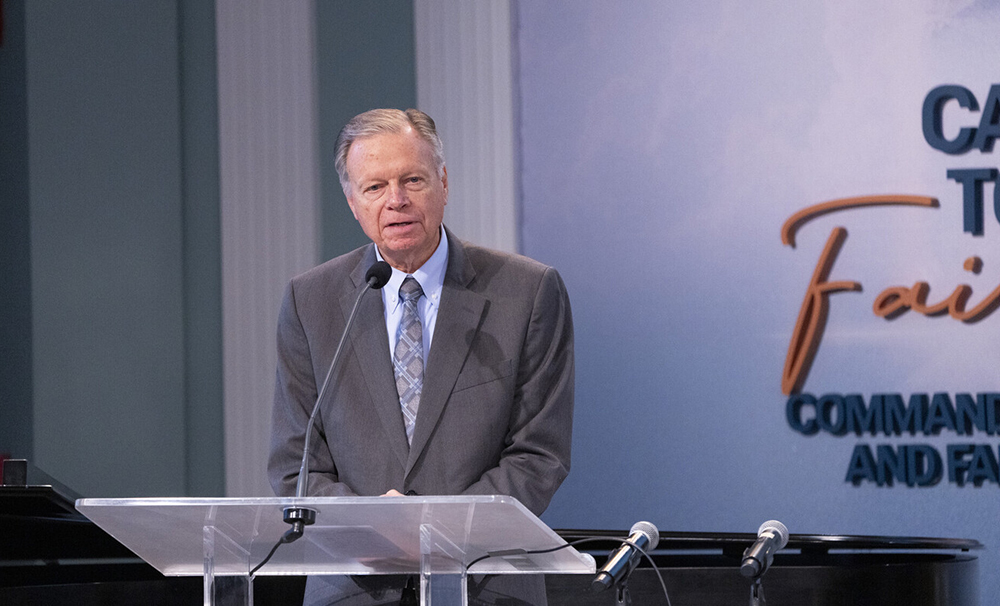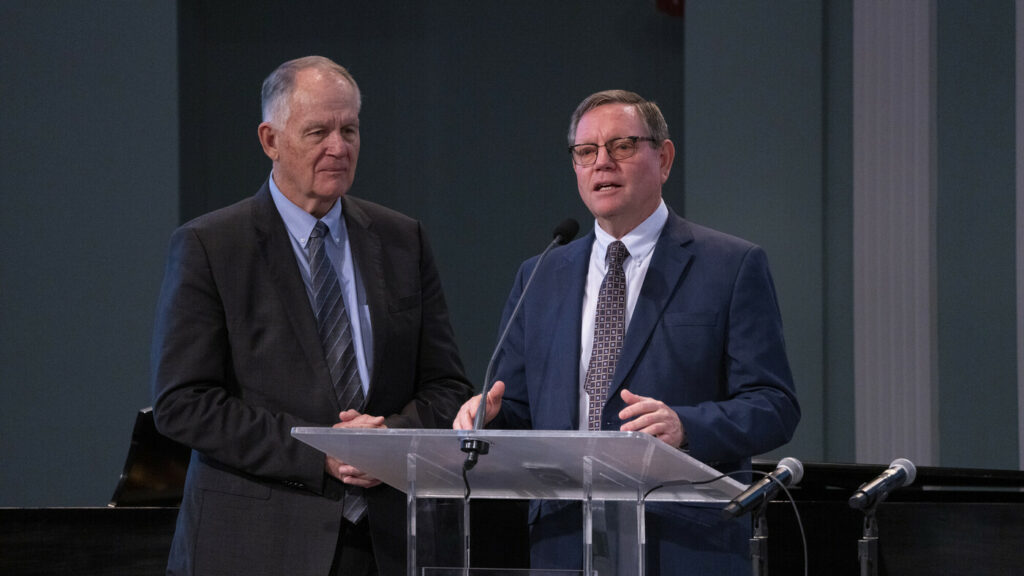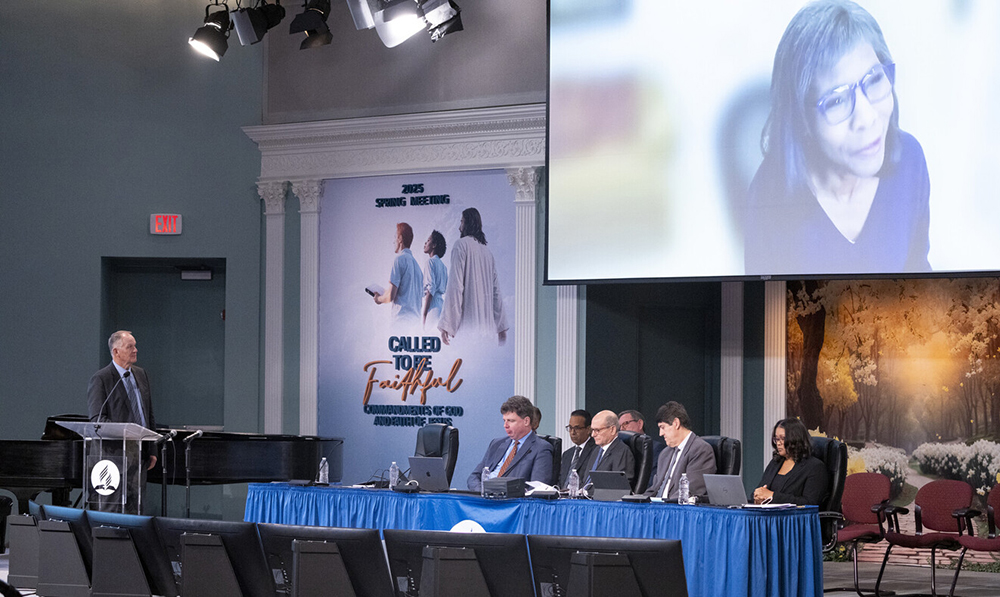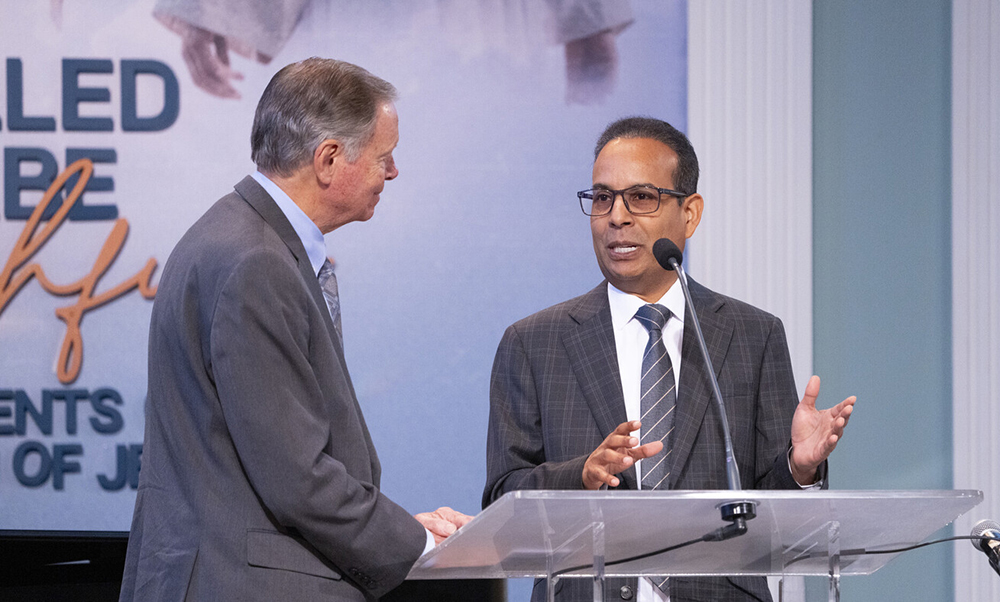Supporting Ministries Are Key to Mission, but There’s a Caveat, Leaders Say
Presentation at the 2025 GC Spring Meeting highlights the role of lay-led organizations.
April 19, 2025 | Silvers Spring, Maryland, United States | Marcos Paseggi, Adventist Review
“Supporting ministries have their root in Scripture,” said Mark Finley, assistant to the president of the General Conference (GC) of Seventh-day Adventists, during a presentation on April 8. Addressing the GC Executive Committee (GC EXCOM) members who met for Spring Meeting in Silver Spring, Maryland, United States, he discussed the role of supporting ministries for church mission, the challenges that sometimes occur with independent ministries, and the difference between the two.
A Common Mission, Commitment, and Message
Finley said that based on 1 Corinthians 12, supporting ministries are part of the “body of Christ,” the diversity of gifts the Holy Spirit given to God’s church. “But the basic thrust of 1 Corinthians 12 is the unity of the body of Christ,” he said, “with each member working together in a common mission, in a common commitment to a common message.”
Based on Acts 18:3, the apostle Paul himself worked as a self-supporting missionary, Finley said. “Paul did not require financial support from the church, but he was committed to message and mission.”

Mark Finley, General Conference assistant to the president, shares a report about the difference between supporting and independent ministries during Spring Meeting on April 8 in Silver Spring, Maryland, United States. [Photo: Enno Müller, Adventist Review]
Guiding Basic Premises
Finley then traced the history of the Adventist-laymen’s Services and Industries (ASi), a Seventh-day Adventist lay-led organization with roots in 1904 with the founding of Madison College. The mission of the school was to train lay self-supporting missionaries, Finley reminded GC EXCOM members. Eventually the model of Madison College was adopted by other schools and businesses, which followed similar principles of supporting the mission of the Adventist Church.
He also explained that those entities gathered around several basic premises, including commitment to the message and cooperation with mission. “They would communicate with Adventist leaders about their plans, and they would collaborate at times on projects,” Finley said. Then he added, “These organizations . . . are not critical to the church, as some independent ministries that think their main mission is to correct the church. . . . This is not what supporting ministries are focused on.”
Most Important Resource
Assistant to the GC president Michael Ryan reminded GC EXCOM delegates that “we are a church whose most important resource is our laypeople.” Ryan introduced Outpost Centers International (OCI) president Steve Dickman. OCI is a lay-led organization that currently networks and nurtures approximately 390 Adventist supporting ministries in more than 80 countries, according to Dickman. “They represent groups of laypeople who are working on behalf of the church.”

Steve Dickman, president of Outpost Centers International (OCI)Outpost Centers International (OCI), shares how OCI vets organizations that it partners with, as Michael Ryan (left), General Conference assistant to the president, listens in. OCI is a lay-led organization that currently networks and nurtures approximately 390 Adventist supporting ministries in more than 80 countries. [Photo: Enno Müller, Adventist Review]
Supporting or Independent?
Ryan asked Dickman to clarify what is, according to OCI, the difference between independent ministries and supporting ministries. Dickman listed some of the conditions of supporting ministries, explaining that to be a member of OCI, the ministry’s governance structure must be separate from the governance structure of the church. Structures need to be managed by members of the Adventist Church who are in good standing, he added. OCI members are required not to accept tithe moneys from Adventist members, but be funded from other resources instead.
Dickman added that “these ministries must covenant to work in support of the doctrines, as well of the mission,” of the Adventist Church. There’s also a fundamental understanding of collaboration. “Let’s work together; let’s be part of the same team,” Dickman said.

Michael Ryan, General Conference assistant to the president, introduces Andi Hunsaker, president of Adventist-laymen’s Services and Industries, during Spring Meeting on April 8 in Silver Spring, Maryland, United States. [Photo: Enno Müller, Adventist Review]
After Dickman, current ASi president Andi Hunsaker also shared how she sees the role of the ministry she leads. “ASi is a collection of people who believe in the Seventh-day Adventist Church,” she said, explaining that it is a member-based organization that includes businesspeople, supporting ministries, and professionals. “We all have the same goal: to share Jesus Christ,” she said, adding, “We all have the goal of supporting the message, the mission, and the leadership of the Seventh-day Adventist Church.”
Working in Collaboration
In the final part of the presentation, Finley interviewed Hartland College president Norbert Restrepo. During his tenure Restrepo led the lay-led organization from being a mostly independent ministry, according to Finley, to “moving much, much closer to the church.”

Norbert Restrepo, president of Hartland College, shares with Mark Finley, General Conference (GC) assistant to the president, and members of the GC Executive Committee how Hartland College worked aligning itself to support the mission of the Adventist Church. [Photo: Enno Müller, Adventist Review]
Church workers and laypeople working in collaboration is the key to success, Finley emphasized once more. “The church must stand together,” he said. “And as it does, the Holy Spirit will be poured out in latter-rain power, the earth will be filled with the glory of God, and Jesus will come.”